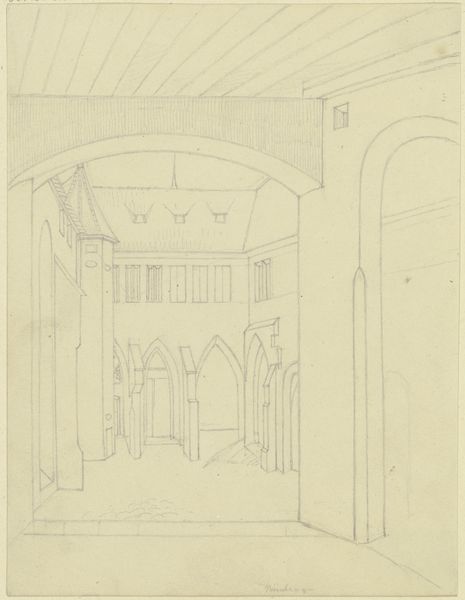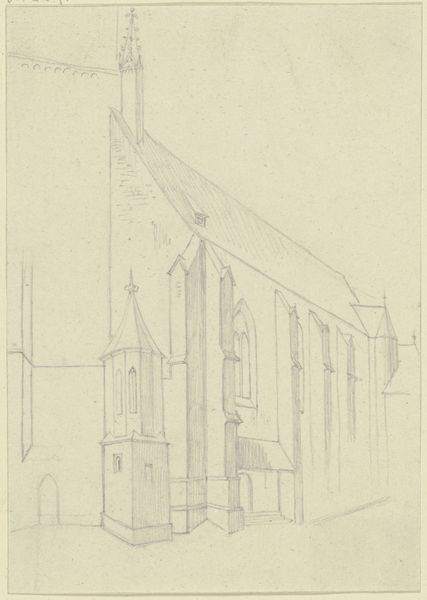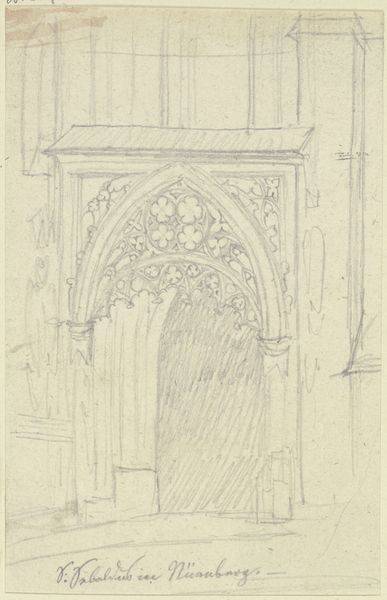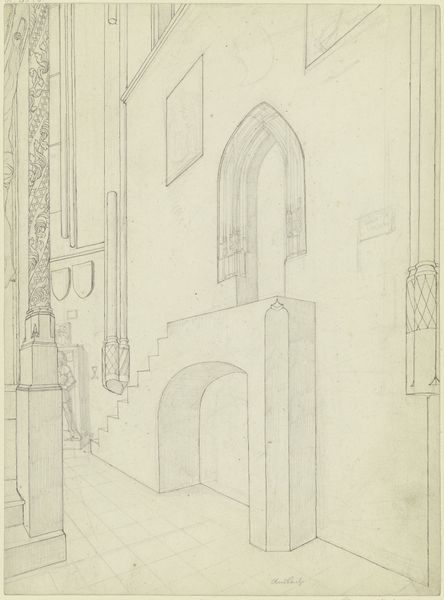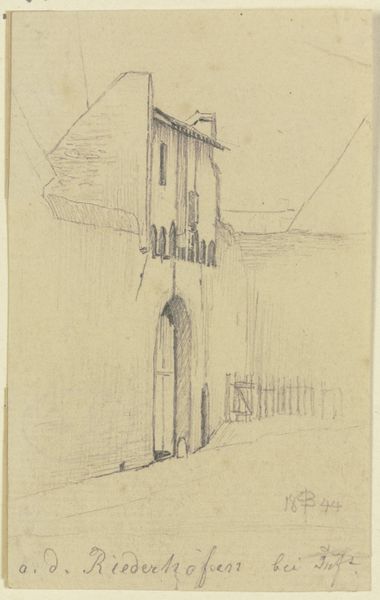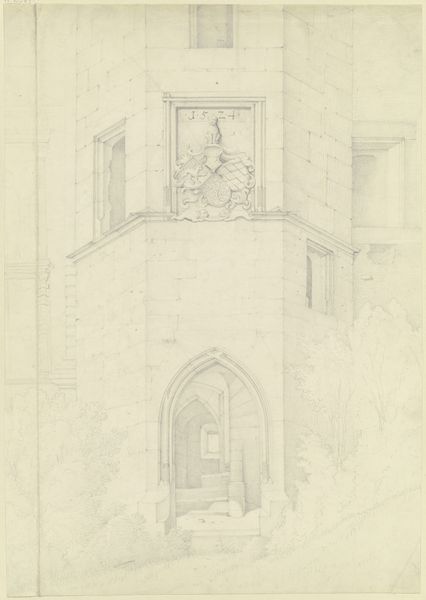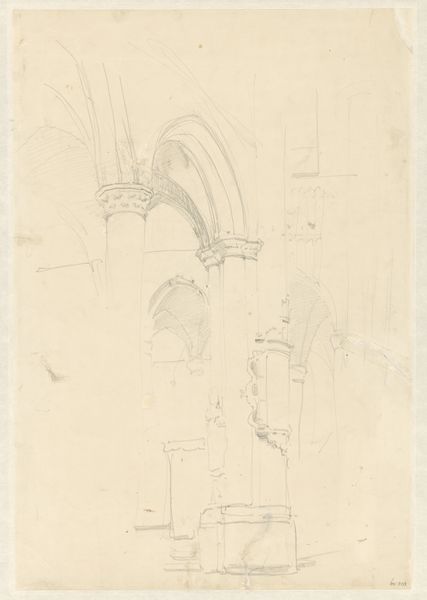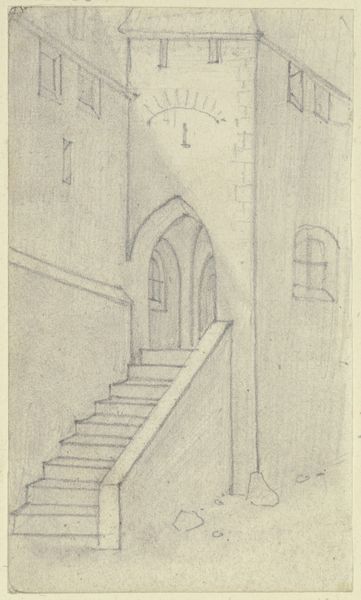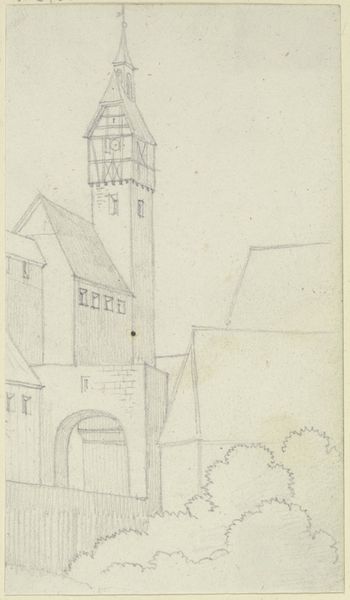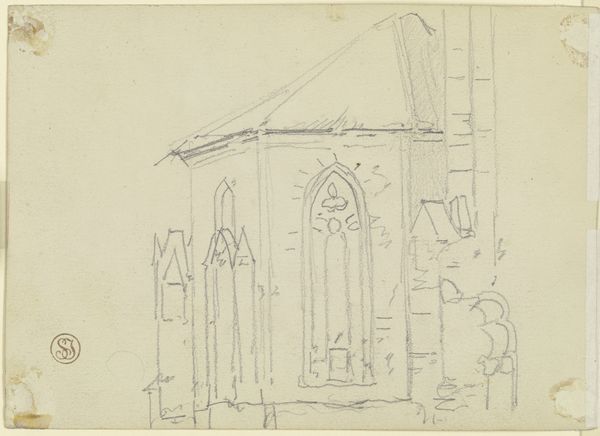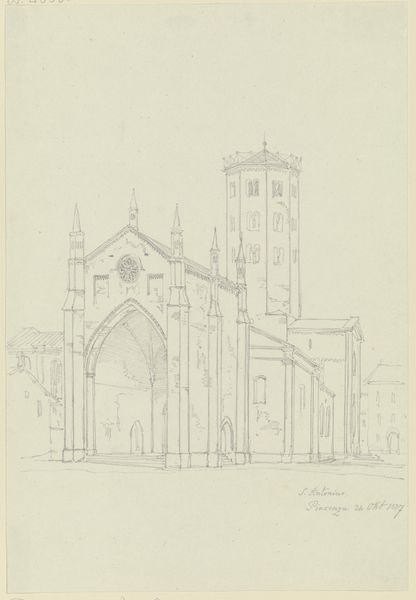
drawing, paper, ink, architecture
#
drawing
#
landscape
#
paper
#
ink
#
line
#
architecture
Copyright: Public Domain
Karl Ballenberger made this pencil drawing of the church portal at Blutenburg sometime in the first half of the 19th century. The delicacy of Ballenberger's touch, in the context of the time, offers us a glimpse into the cultural priorities of early 19th-century Germany. The Gothic style of architecture was enjoying a resurgence, particularly in Bavaria, and the architectural drawing became a symbol of civic pride and cultural sophistication. Note the precision in the rendering of the pointed arches, the emphasis on vertical lines, and the ornamentation around the entrance. These visual choices spoke to the conservative social and political values of the time, and the importance of religious institutions in German society. By studying architectural drawings, along with other historical records, we gain insight into the social conditions that shaped artistic production and the public role of art. The study of the past helps us reflect on the meaning of art as contingent on its social and institutional context.
Comments
No comments
Be the first to comment and join the conversation on the ultimate creative platform.
